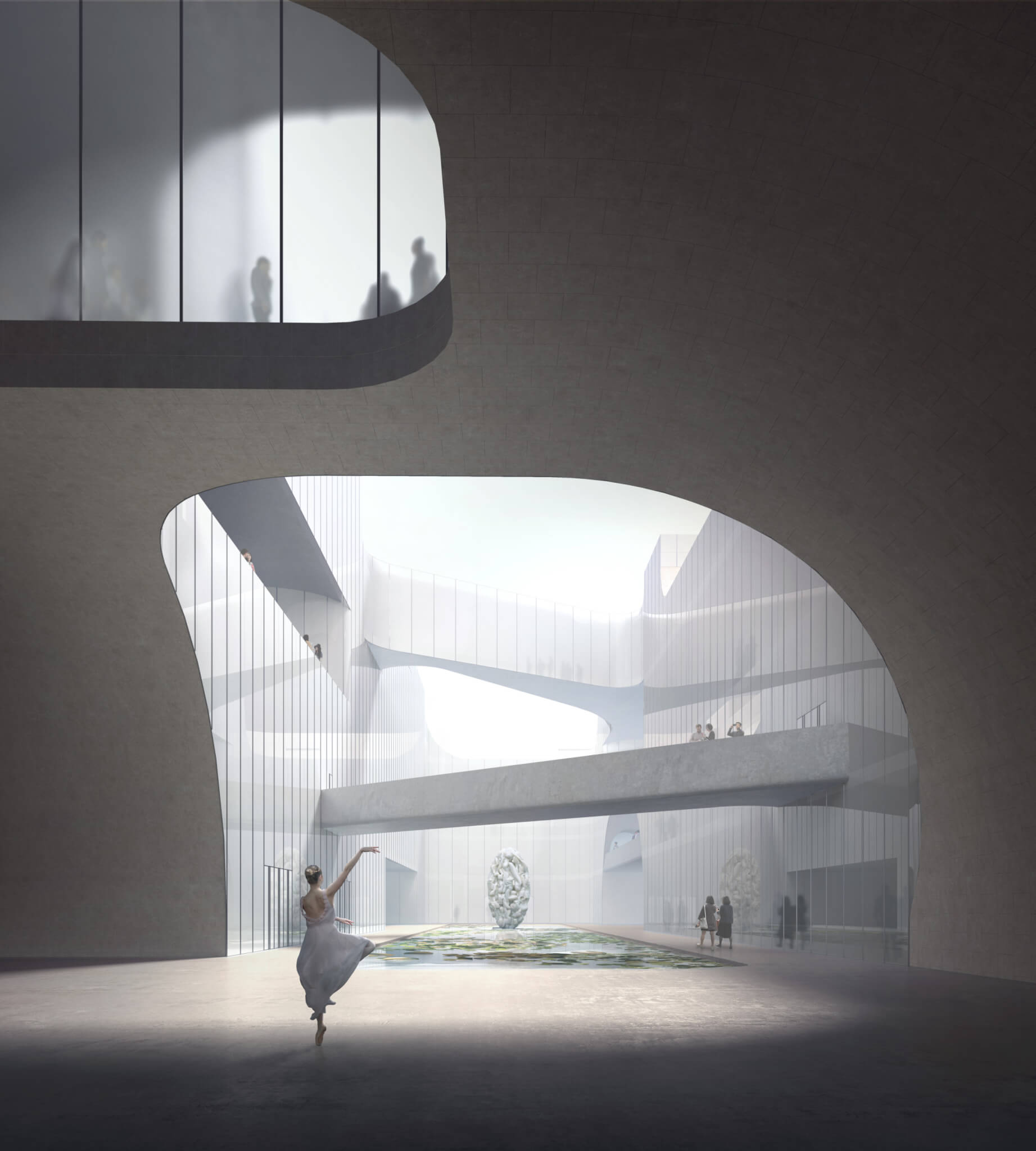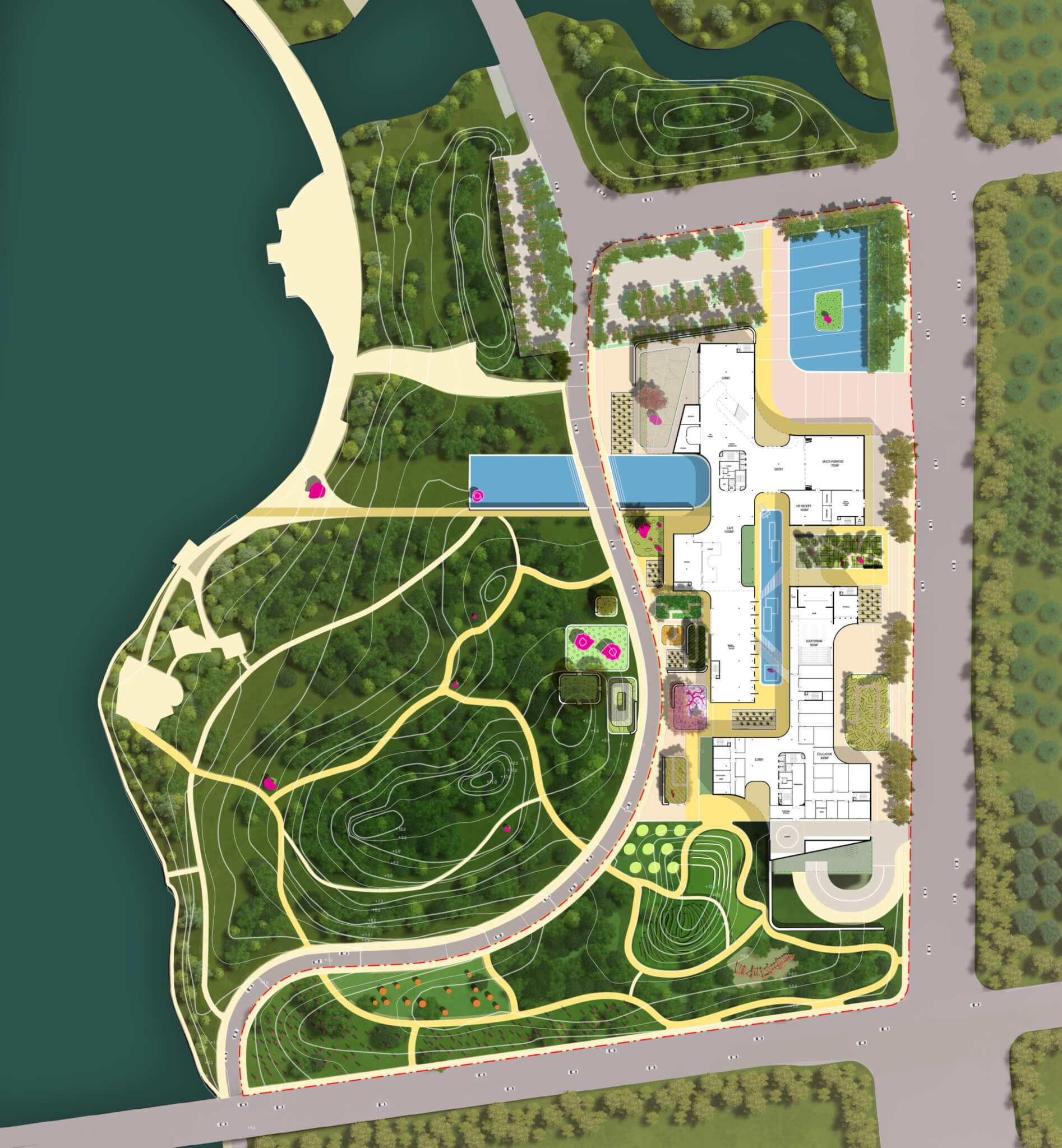Now approaching a decade in operation, the bustling Shanghai studio of New York–headquartered Ennead Architects has revealed its competition-winning design for a major arts and cultural hub in Wuxi, a historic port city of about 5 million residents in the petite-but-populous eastern Chinese province of Jiangsu.
Located within the city’s lakefront Shangxianhe Wetland Park, the forthcoming new Wuxi Art Museum, much like the firm’s design for the new Milwaukee Public Museum, draws direct inspiration from regional geology shaped over the eons by the hands of nature. With the case of the Wuxi Art Museum, the sprawling, multi-volume complex pays homage to Gongshi—or Taihu stones or scholar’s rocks—a prized type of limestone common in traditional Chinese garden design that originates from the foot Dongting Mountain near Lake Tai (Lake Taihu). The large freshwater lake is one of the defining natural features of Wuxi and the surrounding province, which also includes the city of Nanjing, Suzhou, Changzhou, and Xuzhou. Shanghai borders the province on the southeast.
Previously known as the Wuxi Painting and Calligraphy Institute, the government-backed Wuxi Art Museum was first established in 1979 and is currently located in the city’s Chong’an district.
Working in close collaboration with Dutch landscape architecture firm West 8, Ennead has envisioned a new museum fully immersed into the province’s teeming wetland landscape, resulting in “a contemplative and intricate spatial structure that invites one’s spirit in, but also sits quietly as a meditative object amidst the broader natural context,” said the firm.

“The new art museum will serve as a symbol of Wuxi past, present and future, so it was important to us that its design emerge from the cultural history of the garden city and artfully synthesize art, landscape, and the museum experience into an inextricable whole,” explained Brian H. Masuda, associate principal at Ennead Architects.
Masuda goes on to note in a statement that the open, flowing design of the campus works to “clearly communicate the museum’s aspiration to be a welcoming and accessible civic space in Wuxi that strengthens community through the appreciation of artistic creation.”
Linking a series of sculpture-populated gardens, courtyards, and plazas, a “curated” path weaves throughout the lushly landscaped site, which will also feature an outdoor amphitheater for special performances and film screenings.
“Interlocked and intertwined with the porous museum experience of courtyards, galleries, thresholds and open-air ceilings and terraces, the architecture and the landscape share a language that extends the experience of the museum from the inside-out,” explained Daniel Vasini, creative director at West 8 in a statement. “Inspired by Wuxi’s wetland ecology and regional tradition of water management and canals, we asked ourselves, how can we bring human experience to this rich heritage and embed the museum back within the context? As the landscape and architecture symbiotically expand and contract, the sequence of experiences invites the visitor to explore, and to be immersed within a layered system of sculpture gardens.”

Much like West 8’s meandering, ecology-inspired exterior spaces that comprise the Wuxi Art Park, the interior of the roughly 323,000-square-foot museum campus is conceived as a “varied sequence of infinite possibilities,” described Ennead.
“Our vision for the Wuxi Art Museum is to set it in a larger overall composition, highlighting views in and out of the museum through subtractive carves and recesses while emulating the natural erosion of spirit stones,” added designer and Ennead partner Thomas J. Wong in a statement. “The garden metaphor inspires not only a formal proposition but an experiential one, providing an evolving journey of art and nature through a carefully composed choreography that reveals something new with each step.”
The design’s overarching focus on porosity and awe extends to the perforated limestone facade of the museum, which allows abundant natural light to filter in the interior spaces while referencing the imperfect, holed texture of Gongshi
A construction timeline for the new Wuxi Art Museum and Art Park has not been announced.
